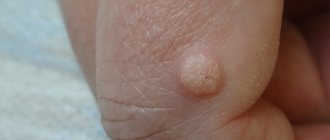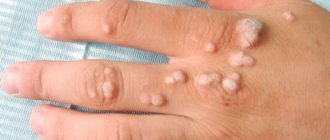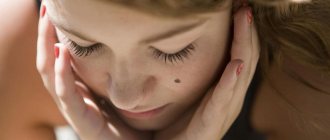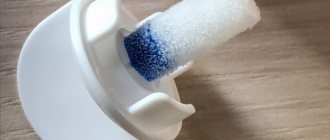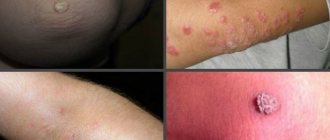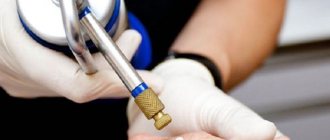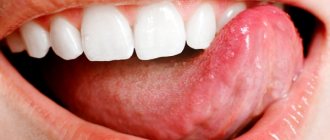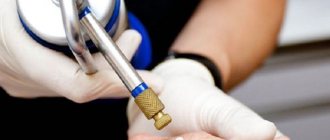Cryodestruction or exposure to liquid nitrogen is the most popular method of treating formations caused by the activity of the papilloma virus. When prescribing the procedure, patients are interested in what the wart looks like after cauterization with nitrogen. What condition of the wound is considered normal, and when it is necessary to seek help. To understand, you should study the features of skin restoration after cryodestruction.
What a wart should look like after removal with nitrogen
Wounds after wart removal using various hardware techniques differ from each other. This is due to the way each specific device influences. Destruction by nitrogen is associated with the effect of low temperature, which is inherent in gas in a liquid state.
Need advice from an experienced doctor?
Get a doctor's consultation online. Ask your question right now.
Ask a free question
During treatment, the growth becomes white and dense. This indicates the destruction of wart cells. Gradually the growth dies off and spontaneous rejection occurs. After some time, a bubble with serous fluid forms at the site of the viral formation, under which new healthy skin grows. Puncture of a blister can be harmful. In some cases, the wart may darken, indicating tissue necrosis. These conditions are considered normal and do not require auxiliary therapy. If the result is favorable, the wound will quickly heal after removal with nitrogen, and the skin will be restored.
Causes of black warts on the body
Before starting treatment, it is necessary to establish the reasons for the development of a black wart on the body. Those who have encountered such formations more than once know that improper reproduction of epithelial cells in the body is provoked by the human papillomavirus. HPV enters the body through contact with sick or infected objects. More than 100 species of this pathogen provoke the development of various skin growths.
However, this is not the only reason for the development of tumors on the body, including black warts. Pathogenic cells begin their development only when the human body’s own immune system does not have time to cope with it. This is possible with:
- frequent viral diseases;
- hormonal disorders associated with age or other processes in the body, including pregnancy and breastfeeding;
- frequent stress and overwork;
- poor nutrition and lack of vitamins.
If the influence of the above factors is not stopped, the development of warts will continue with a gradual change in their color. Blackheads may appear as a result of:
- local deterioration of blood circulation - blood clots form in the roots of the wart;
- age-related changes in the warts themselves - even in young people, ordinary growths can turn black over time;
- systemic changes throughout the body - black warts are common in older people.
Black warts on the body require a mandatory visit to the doctor, since the cause of the color change may also be malignancy, that is, the degeneration of the growth into a malignant structure. Such processes are provoked by injuries and unprofessional treatment of warts.
Alarming accompanying symptoms when black warts appear on the body are their asymmetry, oozing fluid from the formation (with bloody spots), constant growth of the growth and pain. A dermatologist, having examined the formation, will prescribe additional tests, and if the structure is suspected of being malignant, he will refer it to an oncologist.
- Read more about why a wart turns black
Rules for caring for a wound after cauterization
Rehabilitation is no less important stage of treatment than removal.
In order for the restoration of the skin to be successful, without negative consequences and complications, it is necessary to follow the rules of wound care:
- It is forbidden to wet the wound. It is not recommended to take a bath for the first 3 days after surgery.
- After starting water procedures, cover the wound with a plaster to prevent water from entering. After bathing, gently wipe the affected area with a paper towel. It is unacceptable to rub with a towel.
- Change dressing materials regularly. During treatment, use antiseptic agents to prevent dirt from entering the open wound after removal with nitrogen and blood.
- Do not touch the affected area unless necessary. This can injure the area, causing inflammation and prolonged healing.
- It is forbidden to try to cut or pick off a wart. This can lead to the development of complications, which is dangerous in the matter of wound healing and for human health.
- It is necessary to protect the growth from direct sunlight. This includes limiting your time on the beach or visiting the solarium.
- It is forbidden to pierce a bubble with liquid. Under the thin film of the blister there are ideal conditions for the growth of bacteria.
- The crust that appears after the bubble bursts is not peeled off. Otherwise, the risk of scarring or scarring increases.
- It is not recommended to use decorative cosmetics if the growth is on the face. You should avoid using aggressive hygiene products (belongings, masks).
- If the wart is located on the foot, you should limit wearing shoes. For heel wounds, you will have to give up heels and uncomfortable platforms for several months.
- Treatment after removal with nitrogen should be carried out only with products prescribed by the attending physician.
Compliance with all the rules for caring for a wart will help shorten the rehabilitation period. The growth dies off within 2 weeks. During normal healing, after nitrogen removal, the skin will be completely cleared within 1 month.
How to treat a wart after cauterization
Proper treatment of warts after cauterization with nitrogen helps prevent the possibility of bacterial infection and speed up the healing process.
Therapeutic treatment involves the use of special antibacterial agents. They should be used until young skin appears on the wound surface. The most effective means include:
- Fukortsin is an antiseptic solution that has a pronounced antimicrobial effect. It has a bright crimson color. Treatment is carried out 1-3 times a day. Suitable for children under 12 years of age.
- Baneocin is a combined antibacterial drug. Available in powder and ointment form for local treatment. Treatment is carried out 2-4 times a day, depending on the type and scale of the lesion.
- Chlorhexidine is a solution for external treatment of wounds. Actively used in gynecology. It has an antimicrobial effect after removing the wart with nitrogen and prevents the onset of inflammatory processes. Not used in pediatrics.
- Levomekol is an ointment for treating wound surfaces after removal. The ointment contains antibiotics that suppress bacterial flora. The components of the drug enhance regenerative processes.
- Salicylic ointment has anti-inflammatory, keratolytic, antiseptic effects. It is used for treatment when the wound becomes covered with a bubble after cryodestruction. You need to smear it once every 2 days.
- Iodine is a solution intended for antiseptic treatment of wounds after removal of warts with nitrogen. The painful area is lubricated around the circumference, avoiding the solution getting into the wound itself. It is permissible to carry out treatment 2-3 times a day.
- Potassium permanganate – powder for preparing solutions. Potassium permanganate is diluted with boiled water. The solution should acquire a pale pink color; wiping off the wound surface is allowed. If the growth is located on the fingers or feet, you can make baths with potassium permanganate.
When the wound begins to heal, Contractubex (sometimes hormonal drugs) or Panavir are used to prevent scarring. The latter, in addition to its healing properties, has the ability to suppress HPV activity and restore the protective functions of the immune system.
What to do with the consequences of wart removal
Often, after eliminating a growth, a person is faced with the consequences of the procedure. Sometimes the symptoms that arise look unnatural and make you wonder whether everything is okay with the removed wart, or whether there is a need to urgently consult a doctor. After cauterization with liquid nitrogen, the patient can pay attention to changes in the shape, color and density of the growth. In order not to aggravate the healing process, a person needs to understand what actions should be taken and which ones it is better to refrain from.
A blister has appeared at the wound site, can it be pierced?
The appearance of a bubble is a normal reaction of the body to the influence of various types of external stimulus, in this case liquid nitrogen. This occurs with burns or excessive friction. Such a bubble filled with intercellular fluid is a barrier to the penetration of harmful microorganisms. As a rule, it gradually increases in size. This brings some discomfort. There may be some minor pain and pressure. It will burst on its own when the skin “ripens”.
If a water blister appears after removing a wart with liquid nitrogen, it is strictly not recommended to pierce or peel off the skin of the blister. There is a high probability of a streptococcal or staphylococcal infection entering the wound, due to which an inflammatory process will begin and pus will begin to accumulate.
The wart has turned black
The growth may turn black after exposure. This refers to normal phenomena. If the wart turns black after exposure to nitrogen, this indicates a breakdown in cellular connections. Black color indicates imminent death. You should not try to scrape off the growth until it falls off on its own. In this way, you can damage the skin or provoke a bacterial infection.
If redness appears around the wound, a strange color (blue, green) appears, or severe pain is felt, it is better to consult a doctor.
What is a black wart on the body?
Photo of black warts on the body
What is this “black wart on the body” is a question that, contrary to popular belief, every carrier of the human papillomavirus can ask themselves. This type of formation can appear at any age, and not only in the elderly, as many people mistakenly believe.
There are three types of black warts on the body:
- An ordinary wart with one black dot in the growth cavity . This point is often called the root; it is through it that the blood supply to the structure occurs. The root may not appear immediately, but as the common wart grows.
- Growth with several black dots . Multiple points can be not only capillary supply to the wart, but also microthrombi from the rupture of such vessels. Only a specialist is able to find out the nature of such points.
- Completely black wart . Such neoplasms appear both in older age and are called senile black warts on the body (photos of such formations are easiest to find on the Internet), and in young people, being a symptom of the degeneration of education.
Accompanying signs of the formation of a black wart are also a feeling of itching in the affected area. In this case, the growth, regardless of color saturation (from brown to brown, almost black), can reach quite large sizes (up to 6 cm in diameter), and its surface is rough to the touch. Formations, as a rule, are isolated in nature, but this makes them no less dangerous.
Note! Full or partial darkening of a common wart occurs only over time. In the early stages, such a structure develops as an ordinary growth of this type. Any type of such wart requires examination by a doctor.

